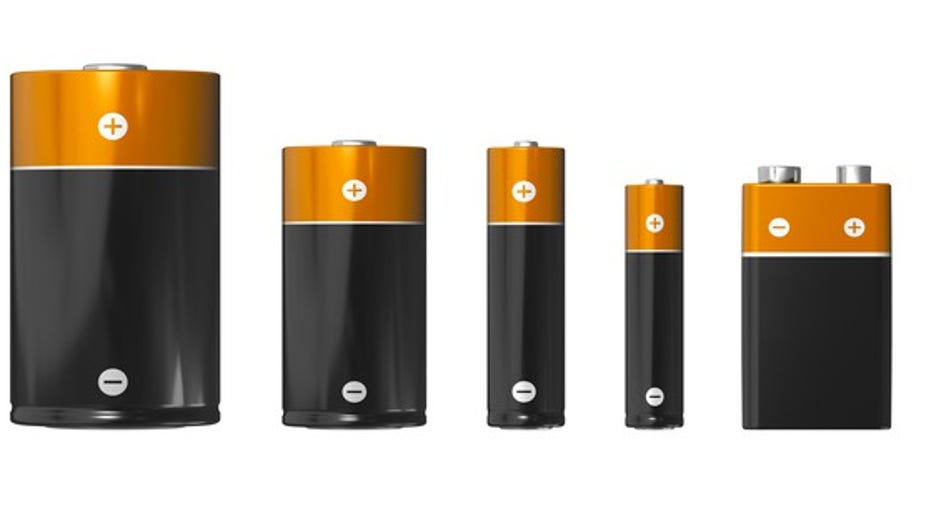3 Top Battery Stocks to Buy in 2017

Overheating batteries spelled disaster for Samsung last year, but battery stocks? They're red hot in a good way -- and ripe for the picking as we enter into 2017.
From miners of lithium to manufacturers of lithium ion, nickel-metal hydride, and other sorts of batteries, investors today have a good handful of public battery companies to choose from. For my money, though, the best "battery stocks" to watch are the ones targeting the market for electric cars: Tesla (NASDAQ: TSLA), Panasonic (NASDAQOTH: PCRFY), and General Motors (NYSE: GM).
(And no, that's not a typo. As I'll explain, General Motors really is a force to be reckoned with in electric car batteries.)
Batteries are evolving -- and more important than ever. Image source: Getty Images.
Tesla
Why cars? Partly because of scale. Tesla's 60 kWh battery pack, for example, is powered by 14 battery modules, containing 384 battery cells each. That's a total of at least 5,376 cells that go into each Tesla Model S sold. Larger battery packs will logically contain even more modules and cells. Multiply that by the 500,000 electric cars Tesla plans to be selling annually by 2020,that's ... a lot of batteries. And that's before counting the numbers of batteries (admittedly, of different types) that go into powering electric cars from General Motors, from Ford, from Toyota, Nissan, and all the others.
In addition, you've probably heard by now that Tesla has changed its name, dropping the "Motors" moniker from "Tesla Motors." Part of the reason for this change is that Tesla is making energy storage for homes and business a bigger part of its business, with its new Powerwall product. In doing so, Tesla isn't just opening a new market for batteries, and creating a place for solar power, generated by its solar-panels business, to be stored when not needed -- it's also giving itself room to scale up its business, so that it will be able to make full use of the battery Gigafactory it's building in the Nevada desert.
Panasonic
Incidentally, this offers us a nice segue into discussing Tesla's partner in the Gigafactory project -- our second battery stock to watch, which is Panasonic.
The Japanese electronics giant is assisting Tesla with battery production in Nevada, and hopes to benefit from both the scale of battery production there, and from the assured customer for its batteries that Tesla will become (and indeed, already is). Already the world's top battery manufacturer by a factor of 3,Panasonic's battery dominance promises to grow even further through its partnership with Tesla.
I'd also be remiss in not pointing out that, whereas Tesla may be the biggest story stock in battery investing, it's not currently profitable -- but its supplier Panasonic is. According to data from S&P Global Market Intelligence, Panasonic earned $1.9 billion in profit over the past year. And Panasonic's "automotive and industrial systems" division, which houses its battery business, contributed more profit ($914 million) than any of the company's other three big divisions. With a stock now trading for less than 14 times trailing earnings, Panasonic is arguably one of the best bargains in battery stocks today.
General Motors
But it's still not as cheap as General Motors. I know, I know -- you say General Motors makes cars, not batteries. But take a look at what kind of cars General Motors has been making lately: The Chevy Volt, named Motor Trend's Car of the Year in 2011. The Chevy Bolt, named Car of the Year this year.In both instances, General Motors won accolades for rolling out electric cars.
While General Motors doesn't make the battery cells that go into powering these cars (South Korea's LG Chem does that for the company), GM does assemble those cells into the battery packs. What's more, GM's involvement in battery technology may be deeper than you know.
In The Powerhouse: Inside the Invention of a Battery to Save the World, former Wall Street Journal correspondent Steve Levine describes the history of America's Argonne National Laboratory and its efforts to build a better rechargeable battery -- specifically, one capable of powering a car for 200 miles of driving on a single charge. Central to the book's story is General Motors' work with battery behemoths such as LG Chem, and also with ground-breaking start-ups such as privately held Envia -- including through making equity investments in the latter.
Simply put, GM is working -- both through its in-house battery lab and through partnerships elsewhere in the battery industry -- to develop an entirely new "superbattery" that it calls NMC 2.0. Unlike the banks of generic, cheap, but older-tech nickel-cobalt-aluminum 18650s that power Tesla's sedans, GM has been developing a nickel-manganese-cobalt cell that it believes will offer greater energy density, giving Chevy's Bolts (and future electric cars) a range advantage over Tesla.
At last report, General Motors still hadn't solved the mystery of inventing NMC 2.0. But investing in GM stock for just 6.2 times earnings, you wouldn't be paying much for the potential that it eventually will.
10 stocks we like better than General MotorsWhen investing geniuses David and Tom Gardner have a stock tip, it can pay to listen. After all, the newsletter they have run for over a decade, Motley Fool Stock Advisor, has tripled the market.*
David and Tom just revealed what they believe are the 10 best stocks for investors to buy right now... and General Motors wasn't one of them! That's right -- they think these 10 stocks are even better buys.
Click here to learn about these picks!
*Stock Advisor returns as of February 6, 2017
Rich Smith has no position in any stocks mentioned. The Motley Fool owns shares of and recommends Ford and Tesla. The Motley Fool recommends General Motors. The Motley Fool has a disclosure policy.



















